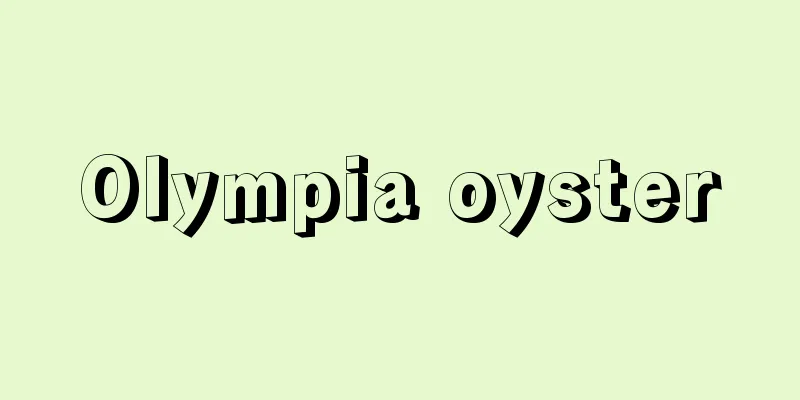Liability insurance - liability insurance

|
Property insurance that aims to compensate for damages suffered by the insured as a result of assuming legal responsibility to make certain financial payments to a third party based on legal provisions or contracts. With the rapid development of industry, transportation, and other areas, opportunities for individuals or companies to commit acts of harm against others have increased. As a result, individuals or companies are held liable for compensation for damages inflicted on others when they are negligent, and in some cases even when they are not negligent. When a certain financial payment is made to the victim as fulfillment of the liability, the insured suffers a loss in the form of a reduction in their assets. Liability insurance is the insurance that compensates the insured for such damages. [Mitsuo Sakaguchi] FeaturesLiability insurance differs from general insurance in that in addition to the insurer (insurance company) and the insured, there are third parties who suffer damage. Liability insurance functions to protect both the perpetrator who bears the liability for compensation and the victim, who is the other party. In other words, by subscribing to liability insurance, the perpetrator can protect himself or herself from the economic damage that would be incurred by bearing the liability for compensation. On the other hand, if the perpetrator also has liability insurance, this ensures that the perpetrator has the financial means to pay, and as a result, the victim is sure to receive compensation from the perpetrator. In this way, liability insurance functions to protect both the perpetrator and the victim, but in insurance with a strong social policy character, such as automobile liability insurance, the idea of placing emphasis on protecting the victim is adopted. [Mitsuo Sakaguchi] kindsLiability insurance is said to have originated from Workers' Accident Compensation Insurance (Workmen's Accident Insurance), which was created in the US and Europe in the 19th century. In Japan, liability insurance was licensed as an independent insurance category in 1953 (Showa 28), but with the increase in claims for damages due to the subsequent economic development, many types of liability insurance have appeared today. (1) Liability insurance for businesses: Facility owner/manager liability insurance, elevator liability insurance, oil pollution liability insurance, contractor liability insurance, product liability insurance, hotel liability insurance, store liability insurance, LPG company liability insurance, security company liability insurance, custodian liability insurance, automobile manager liability insurance, corporate comprehensive liability insurance, directors and officers liability insurance, environmental pollution liability insurance, etc. (2) Liability insurance for professionals: Includes liability insurance for doctors, pharmacists, physical therapists, lawyers, certified public accountants, tax accountants, travel agents, information service providers, and telecommunications carriers. (3) Personal Liability Insurance This includes personal, golfer, tennis, ski, and skate liability insurance. Liability insurance only functions when the tortfeasor assumes legal responsibility to the victim, so the prerequisite for the insurance to function is that the tortfeasor's legal responsibility must be established. However, it is not rare to require a lot of time and money to establish the tortfeasor's liability for damages. The flaw or limitation of liability insurance is that compensation is not paid regardless of whether the tortfeasor is liable for damages. [Mitsuo Sakaguchi] "Tokio Marine & Nichido Fire Insurance Co., Ltd., 'Property Insurance Practical Course 7: New Types of Insurance (Part 1)' (1989, Yuhikaku)" [Reference item] | | | |Source: Shogakukan Encyclopedia Nipponica About Encyclopedia Nipponica Information | Legend |
|
被保険者が法律の規定または契約に基づいて、第三者に対して一定の財産的給付をなすべき法的責任を負うことによって被る損害を填補(てんぽ)することを目的とする損害保険。産業や交通などの飛躍的な発展に伴って、個人または企業が他人に対して加害行為を行う機会が増大した。その結果、個人または企業に過失があるとき、場合によっては過失がないときにも、他人に加えた損害について賠償責任を負わされる。賠償責任の履行として被害者に一定の財産的給付を行うと、被保険者にはその財産の減少という損害が発生する。被保険者のこうした損害を填補する保険が賠償責任保険である。 [坂口光男] 特徴賠償責任保険においては、一般の保険と異なり、保険者(保険事業者)と被保険者のほかに被害を被る第三者が存在する。賠償責任保険は、賠償責任を負担する加害者と、その相手方である被害者の両者を保護する機能を有する。すなわち、加害者は賠償責任保険に加入することにより、賠償責任を負担することで被る経済的損害から自らを防衛することができる。他方、加害者が賠償責任保険に加入しているならば、それによって加害者の支払い資力が確保され、その結果として被害者が加害者から賠償金を受けられることが確実となる。このように、賠償責任保険は加害者と被害者の両者を保護する機能を有するが、自動車損害賠償責任保険のような社会政策的な性格が強い保険においては、被害者保護を重視するという考えが採用されている。 [坂口光男] 種類賠償責任保険の起源は、19世紀に欧米で生まれた労働者災害補償保険(労災保険)であるといわれている。わが国では1953年(昭和28)に賠償責任保険が独立の保険種目として事業免許を取得したが、その後の経済の発展による損害賠償請求の増加に伴い、現在では多くの賠償責任保険が登場している。 (1)企業向けの賠償責任保険 施設所有管理者賠償責任保険、昇降機賠償責任保険、油濁賠償責任保険、請負業者賠償責任保険、生産物賠償責任保険、旅館賠償責任保険、店舗賠償責任保険、LPガス業者賠償責任保険、警備業者賠償責任保険、保管者賠償責任保険、自動車管理者賠償責任保険、企業包括賠償責任保険、会社役員賠償責任保険、環境汚染賠償責任保険など。 (2)職業人向けの賠償責任保険 医師・薬剤師・理学療法士・弁護士・公認会計士・税理士・旅行業者・情報サービス業者・電気通信事業者賠償責任保険などがある。 (3)個人向けの賠償責任保険 個人・ゴルファー・テニス・スキー・スケート賠償責任保険などがある。 賠償責任保険は、加害者が被害者に対して法的責任を負担したときに初めてその機能を発揮するので、保険が機能する前提として、加害者の法的責任が確定することを要する。しかし、加害者の賠償責任の確定のためには、多くの費用と時間を必要とする場合が少なくない。加害者の賠償責任の有無とは無関係には賠償責任保険の給付が行われない点に、賠償責任保険の欠陥あるいは限界がある。 [坂口光男] 『東京海上火災保険株式会社著『損害保険実務講座7 新種保険(上)』(1989・有斐閣)』 [参照項目] | | | |出典 小学館 日本大百科全書(ニッポニカ)日本大百科全書(ニッポニカ)について 情報 | 凡例 |
>>: Anti-prostitution Movement
Recommend
Joseph Kessel
French novelist. Born in Argentina as a Russian J...
Barrier -
〘Noun〙① Buddhist term. Meaning to restrict an area...
Methyl
[ I ] This refers to the CH3- group. It is the si...
gamma
One of the constants that express the characteris...
Hadamard, Jacques-Salomon
Born: December 8, 1865, Versailles [Died] October ...
Pontos Euxeinos (English spelling)
...Most of the coastal areas are blessed with a m...
Arima Harunobu
A Christian feudal lord in the Azuchi-Momoyama pe...
Certificate of Achievement
It means "certificate of ordination". I...
Assassin bug - Assassin bug
...They live in the trees in mountainous areas. T...
Le Musée Condé (English name)
…The Condé family had been living in the Château ...
Waterston, JJ
...The static theory of gases as described above ...
Chippubetsu [town] - Chippubetsu
A town in Uryu County, Hokkaido. The Rumoi Main Li...
African pygmy squirrel
…They are found all over the world except Austral...
Carte de visit - Carte de visit
...In other words, while the one-off daguerreotyp...
"Happily I am happy" - Ugoshiku zonshi soga
...As the traditional Edo entertainment system th...









